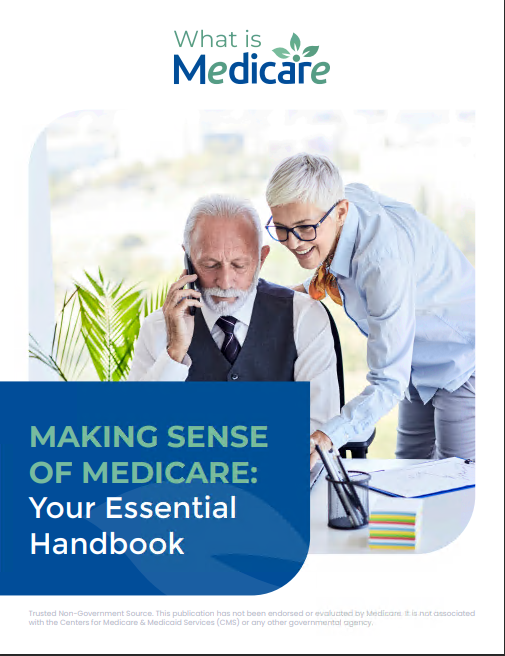Key Takeaways:
-
Reviewing a Medicare Part D plan‘s formulary, cost structure, and coverage rules is crucial to avoiding unexpected expenses.
-
Comparing different plans annually ensures you get the best coverage for your current prescriptions at a reasonable cost.
Understanding Medicare Part D: Why Every Detail Matters
When it comes to Medicare, one of the most important decisions you’ll make is selecting the right Part D prescription drug plan. While these plans help cover the cost of medications, they are not all the same. Before you enroll, it’s crucial to review key details that could affect how much you pay and which medications you can access. Ignoring the fine print could lead to unexpected expenses or coverage gaps, so it pays to take your time.
1. Check the Plan’s Formulary: Does It Cover Your Medications?
Every Medicare Part D plan has a formulary, which is a list of covered prescription drugs. These lists vary by plan and can change from year to year. Before signing up, you should:
-
Verify that all your current prescriptions are included in the plan’s formulary.
-
Check if your medications require prior authorization or step therapy, which could delay access.
-
Ensure the plan includes both brand-name and generic alternatives if needed.
Medications are typically divided into tiers, with lower-tier drugs costing less than higher-tier drugs. Understanding how your prescriptions are categorized can help you estimate costs more accurately.
2. Review Drug Costs: What Will You Actually Pay?
Medicare Part D plans include various costs that can add up quickly. Pay attention to the following:
Monthly Premiums
While every plan has a premium, costs can vary significantly. Keep in mind that choosing the lowest premium isn’t always the best choice if other out-of-pocket costs are high.
Deductibles and Copayments
-
Some plans have a deductible, meaning you must pay out of pocket before the plan starts covering medications.
-
Copayments or coinsurance rates vary based on drug tiers, with higher-tier drugs generally costing more.
Coverage Phases and the Donut Hole
Medicare Part D has different phases that impact your costs throughout the year:
-
Deductible Phase: You pay 100% of drug costs until you meet the deductible.
-
Initial Coverage Phase: The plan pays a portion, and you pay copayments or coinsurance.
-
Coverage Gap (Donut Hole): After reaching a spending limit, you pay a percentage of drug costs.
-
Catastrophic Coverage: Once you hit the out-of-pocket maximum, your costs drop significantly.
Understanding where you might fall in these phases helps you anticipate costs throughout the year.
3. Look at Network Pharmacies: Where Can You Fill Prescriptions?
Not all pharmacies work with every Medicare Part D plan. Before enrolling, check:
-
Whether your preferred pharmacy is in-network, as out-of-network pharmacies may charge much higher prices.
-
If the plan offers preferred pharmacy pricing, which can lower your out-of-pocket costs.
-
Whether mail-order pharmacy options are available for convenience and potential savings.
Using an out-of-network pharmacy could mean paying the full price for medications, so this detail is crucial to keeping costs low.
4. Consider Medication Restrictions: Will You Face Extra Hurdles?
Some Part D plans impose restrictions that could affect how and when you get your medications. Be aware of:
-
Prior Authorization: Your doctor must get approval from the plan before certain drugs are covered.
-
Step Therapy: You may have to try lower-cost drugs before getting approval for higher-cost medications.
-
Quantity Limits: Some plans limit the amount of a medication you can get at one time.
If any of these restrictions apply to your prescriptions, check how they may impact your access to medication and discuss alternatives with your doctor.
5. Compare Plans Annually: Stay Ahead of Changes
Medicare Part D plans can change every year, including:
-
Formularies (which drugs are covered)
-
Cost structures (premiums, deductibles, and copays)
-
Pharmacy networks
The Medicare Open Enrollment Period (October 15 – December 7) is your chance to review these changes and switch plans if needed. Even if your plan worked well last year, checking for better options is always a smart move.
6. Evaluate Extra Help Programs: Can You Reduce Costs?
If you have limited income and resources, you might qualify for Extra Help, a program that reduces Part D costs. This program can lower:
-
Premiums
-
Deductibles
-
Copayments
Applying for Extra Help can make a big difference in managing your prescription drug expenses. You can check your eligibility through the Social Security Administration.
7. Understand the Plan’s Star Ratings: Quality Matters
Medicare assigns star ratings (1 to 5) to Part D plans based on factors like customer satisfaction, drug pricing accuracy, and overall performance. A higher-rated plan generally indicates better service and reliability. Checking these ratings can help you pick a plan that provides good coverage without unnecessary hassle.
8. Don’t Forget to Check for Late Enrollment Penalties
If you don’t sign up for Medicare Part D when you first become eligible and don’t have other creditable drug coverage, you may face a late enrollment penalty. This penalty:
-
Is added to your premium permanently for as long as you have Part D.
-
Increases the longer you go without creditable drug coverage.
To avoid penalties, enroll in a plan as soon as you’re eligible, even if you don’t take many medications now.
9. Ask for Help: Don’t Navigate Alone
Medicare can be confusing, but help is available. You can:
-
Speak with a Medicare counselor through State Health Insurance Assistance Programs (SHIPs).
-
Call 1-800-MEDICARE for guidance.
-
Use Medicare’s Plan Finder Tool to compare options based on your prescriptions and location.
Taking the time to explore your options and seek assistance ensures you make the best choice for your healthcare needs.
Make an Informed Choice for Your Health
Choosing the right Medicare Part D plan takes careful research, but it’s worth the effort to avoid unnecessary costs and coverage issues. By reviewing a plan’s formulary, costs, pharmacy network, and restrictions, you can find a plan that fits your prescription needs and budget. Make sure to compare plans each year during open enrollment and take advantage of available resources to guide your decision. A little effort now can lead to significant savings and peace of mind down the road.










